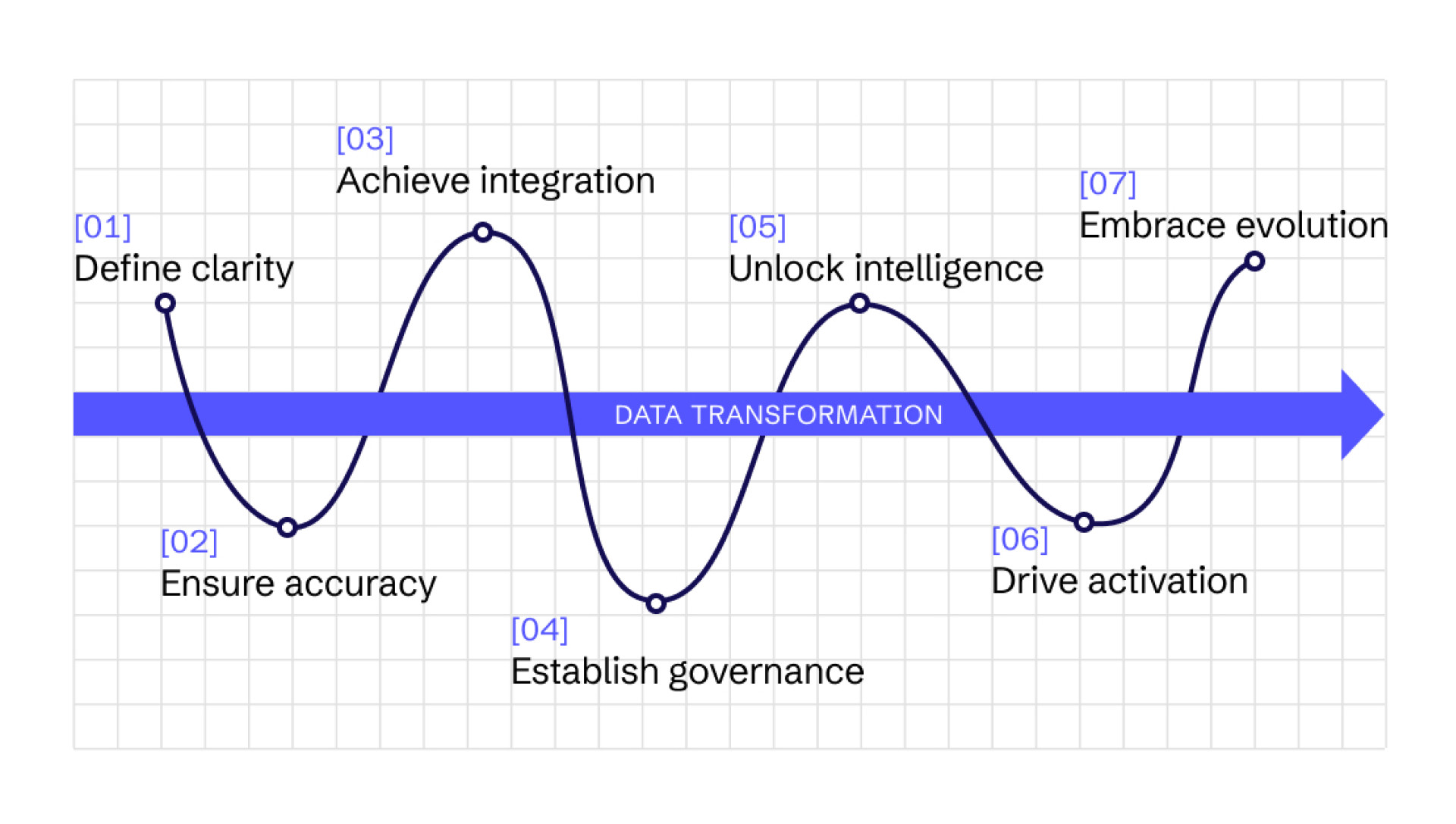Is data your most valuable asset?
In today's digital-first world, businesses are under increasing pressure to deliver seamless, personalised digital experiences that exceed their customers’ expectations. However, many organisations struggle with siloed or fragmented data systems, missing out on a rich goldmine of valuable insights to drive performance, impact, and results.
The challenge of fragmented data
Businesses often operate with disjointed or siloed data systems, where customer information is scattered across various departments and platforms. This fragmentation leads to inconsistent customer experiences, as different departments may have varying views of the same customer. Moreover, it hampers the ability to gain holistic insights, making it challenging to tailor services to individual needs.
Exclusive research by 7DOTS revealed that nearly half of finance brands were unknowingly non-compliant with data protection laws. This can lead to serious legal, financial, and reputational risks. That’s why 7DOTS actively help clients unify their data to ensure digital platforms not just enhance performance and user experience, but also meet compliance standards, protecting them from any hidden threats of non-compliance.
The power of unified data
Data can be like a puzzle, you get a clear picture when you assemble the pieces in the right way.
Unified data allows for the creation of intuitive and personalised customer journeys. By understanding customer behaviours and preferences, you can offer relevant products and services, improving engagement and satisfaction.
A cohesive data strategy not only enhances customer experiences but also drives internal efficiencies. With a unified data approach, teams can collaborate more effectively, reduce redundancies, and accelerate innovation.
Unifying data enables businesses to:
✅ Enhance personalisation: With a 360-degree view of the customer, you can offer tailored products and services that meet individual preferences.
✅ Improve decision-making: Consolidated data provides accurate insights, facilitating better strategic decisions and risk assessments.
✅ Streamline operations: Unified data reduces redundancies and inconsistencies, leading to more efficient processes and cost savings.
Transform digital experiences by unifying data.
I recently shared How Unifying Data Can Create Transformative Digital Experiences in Finance with The Financial Services Forum.
“The challenge lies not simply in gathering data, but in transforming these signals into actionable insights that pinpoint customer pain points and personalised solutions.”
Here’s a summary of the 7 steps to use data to measure performance, create user-centric personalised experiences, and achieve competitive advantage.
This roadmap outlines how to transform data into your most powerful strategic asset.

copy
7-step roadmap to transform data into your most powerful strategic asset
1) Define clarity
Establish objectives for how data will be used, ensuring compliance, and setting measurable goals.
2) Ensure accuracy
Without accurate data, the personalised experience becomes frustrating and ineffective, damaging customer trust.
3) Achieve integration
A 360-degree unified customer view requires breaking down data silos to understand the customer journey and personalise interactions.
4) Establish governance
It is crucial to build and maintain trust in the digital realm, so defining clear rules and responsibilities for data management and protecting customer data is key.
5) Unlock intelligence
Unified data allows you to extract meaningful insights to drive strategic decision-making. AI can be critical in extracting the insights at scale, assembling the pieces faster.
6) Drive activation
Once the right data has been unlocked, you need to realise the value of it to drive performance and create personalised products and services.
7) Embrace evolution
Create a culture of continuous improvement and adaptation to move from a siloed to a holistic data strategy. Within a rapidly changing digital context, it's important to be in a position to adapt and react to market changes and customer needs.
A real life example of this in action: Cosegic
A good example of this in action is our client, Cosegic, a compliance consultancy who wanted to fully attribute the impact of its digital marketing activity.
The business created a connected ecosystem and full data attribution modelling across multiple data touchpoints, providing a clear view of Return on Investment (ROI).
This laid the groundwork for increased conversions and brand visibility. With this level of integrated data comes a critical need for robust governance.
Key outcomes:
+95%
ROAS against FS industry average
+41%
Increased SQL paid media pipeline YOY
+28%
Increase paid media revenue YOY
Conclusion
In an era where customer expectations are continually evolving, businesses that prioritise data unification stay competitive. By breaking down data silos and creating a cohesive data ecosystem, you can deliver transformative digital experiences that not only meet but exceed customer expectations.
By embracing these 7 steps, businesses can transform data into a powerful opportunity to develop deeper relationships, build loyalty, and make meaningful connections with clients. By integrating and unifying data to gain a holistic view you are better equipped with real insights to make informed decisions and tailor offerings to market appetite.
For a deeper dive into this topic, you can read the full article on The Financial Services Forum's website: How Unifying Data Can Create Transformative Digital Experiences in Finance

